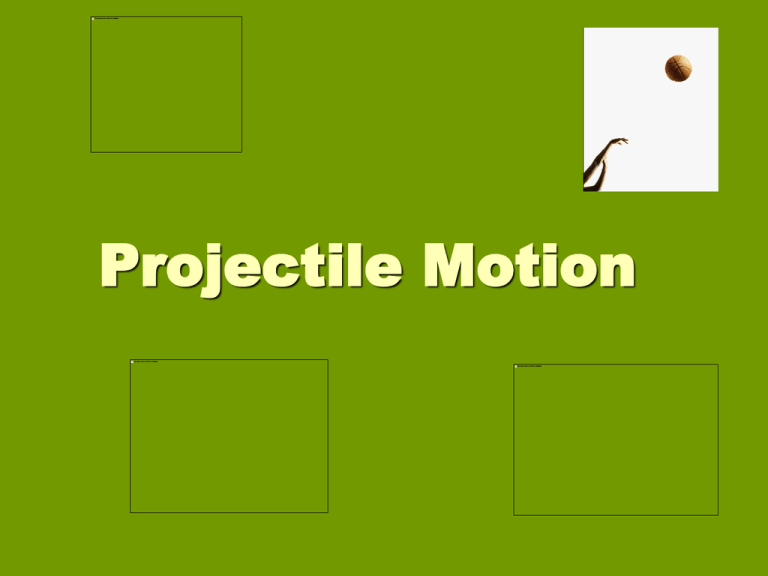File
advertisement

Projectile Motion What is projectile? A projectile is any object released into the air. Once an object is in the air its flight path is governed by factors prior to its release. Factors affecting the flight path of a Projectile are: Gravity Air Resistance Speed of Release Angle of Release Height of Release Spin Speed of Release This refers to how fast the object is released (thrown or hit). A projectiles speed of release is largely determined by the muscle force. Generally, the greater the speed of release, the greater the distance gained Angle of Release This refers to the angle that the object is thrown at or hit into the air Angle of Release In sporting situations the angle of release varies according to the activity. In activities such as shooting a basketball angle above 45 degrees is required. In activities such as tennis a lower, around 3 to 15 degree angle is required. Angle of Release What would happen if the angle of release were too high for a given activity? Poor distance gained What would happen if the angle of release were too low for a given activity? Poor flight time and possibly poor distance Height of Release This refers to how high above the ground an object is released at. Height of Release Increasing the height of release improves the horizontal distance objects can be projected. For a given speed and angle of release, the greater the height of release the greater the distance gained. This is because the time in the air will be greater. Height of Release Would this mean that a golfer hitting a ball off the top of a hill would hit it further than a golfer at the bottom of the hill? Why? Yes – the ball will stay in the air longer so will have a greater chance to fly further. This assumes the same club and force is used. Spin When applying force to a projectile below, above or to the side of the COG you will impart spin onto the projectile. This helps the projectile to maintain its course and can cause it to change height or direction. Spin Spin happens as a ball moving through the air will move in the direction of least air pressure. When you hit the ball you create an area of high pressure meaning the ball will travel in the opposite direction to the side you hit. Spin continued… There are 4 main types of spin that can be imparted to a projectile: 1. Top Spin – this is where you hit over the ball. Top spin creates a downward force on the ball causing the ball to drop. Spin continued… 2. Back Spin – this is where you hit under or slice the ball. Backspin creates an upward force that lifts the ball causing the ball to rise. Spin continued . . . 3. Clockwise Spin – this is where you hit the ball on the left side of the COG. It causes the ball to swing to the Right. Spin continued . . . 4. Anticlockwise Spin – this is where you hit the ball on the rightside of the COG. It causes the ball to swing to the Left. Gravity What is the effect of gravity on a projectile? It decreases the height a projectile can attain. Air Resistance There are several key factors that bring air resistance into play: The larger the surface area, the more air resistance will affect the object. E.g a basketball compared to a golf ball. The type of surface of the object. If the surface is rough then air resistance will be greater. Speed. As speed increases, so does air resistance. E.g a space shuttle (friction) Mass. The smaller the mass (lighter the object), the more air resistance will affect it.










